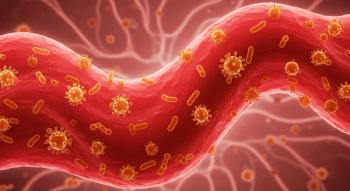
A Pharmacist’s Guide to Diabetic Ketoacidosis
Diabetic ketoacidosis poses serious risks for patients with diabetes, requiring urgent treatment to prevent life-threatening complications and ensure recovery.
Diabetic ketoacidosis (DKA) is a life-threatening complication that arises in individuals with diabetes, especially those with type 1 diabetes (T1D), though it can also occur in type 2 diabetes (T2D) under certain conditions. DKA occurs when there is an absolute or relative deficiency of insulin, often precipitated by factors such as infection, insufficient insulin administration, or physical stress. In the absence of adequate insulin, the body is unable to utilize glucose for energy, leading to the breakdown of fats into free fatty acids, which are converted into ketones. The accumulation of ketones in the blood results in metabolic acidosis, characterized by a reduced serum bicarbonate concentration and a high anion gap.¹ If left untreated, DKA can lead to severe dehydration, electrolyte imbalances, and even coma or death.
Diabetic Ketoacidosis
DKA is often triggered by infections such as urinary tract infections, pneumonia, or sepsis, as well as noncompliance with insulin therapy or inadequate dosing. Other triggers include excessive alcohol, poor diet, and physical or emotional stress, all of which worsen insulin deficiency.² Certain medications, such as corticosteroids, thiazides, and sodium glucose cotransporter 2 (SGLT2) inhibitors, can also increase DKA risk by affecting glucose metabolism and renal function.³
DKA is a significant cause of morbidity and mortality in diabetes, accounting for 5% to 8% of hospital admissions for diabetes-related complications, with 30% of patients requiring intensive care.⁴ Although more common in individuals with T1D, it can also occur in those with T2D, especially with poor glycemic control or infection. The incidence of DKA is increasing, partly due to the rising prevalence of diabetes and inadequate management.⁵
The primary mechanisms of DKA involve insulin deficiency and increased counter-regulatory hormones like glucagon and cortisol. Glucose can't enter cells without insulin, leading to hyperglycemia. To compensate, the body breaks down fats into free fatty acids, which are converted into acidic ketones like acetoacetate and β-hydroxybutyrate, causing metabolic acidosis.²
The clinical manifestations of DKA are typically severe and include polyuria, polydipsia nausea, vomiting, abdominal pain, and fruity-smelling breath due to the presence of acetone, a byproduct of ketone metabolism. As the condition progresses, patients may experience confusion, lethargy, and eventually a coma if untreated.¹ Laboratory findings include elevated blood glucose levels, low serum bicarbonate (<15 mEq/L), and a high anion gap (>10), which are key diagnostic markers for DKA. The presence of ketones in the blood or urine further supports the diagnosis.²
Treatment
Fluid resuscitation is the cornerstone of DKA management. Initial fluid replacement in DKA involves isotonic crystalloid solutions such as normal saline or lactated Ringer’s, with 15 mL/kg to 20 mL/kg over the first few hours, up to 50 mL/kg/hr to avoid cerebral edema.¹ Once glucose drops below 200 mg/dL, switch to fluids containing dextrose to prevent hypoglycemia.⁴ The goal is to replace 50% of the fluid deficit in the first 8 to 12 hours and the rest over 24 to 36 hours.⁶
In DKA, potassium levels appear elevated due to the shift of potassium from inside to outside cells in response to acidosis. However, total body potassium is often depleted, and careful replacement is needed. Insulin therapy worsens hypokalemia by driving potassium back into cells. Potassium replacement should start when serum levels fall below 3.3 mEq/L, typically at a rate of 20 mEq/hr to 40 mEq/hr, with close monitoring to avoid both hypokalemia and hyperkalemia.⁴
Insulin administration is critical to reversing the insulin deficiency and halting ketogenesis. The standard approach is to give an initial intravenous bolus of 0.1 units/kg, followed by a continuous infusion of 0.1 units/kg/hr. The goal is to achieve a glucose reduction of approximately 50 mg/dL/hr to 75 mg/dL/hr, ensuring gradual correction to prevent complications such as cerebral edema.¹ Once blood glucose levels fall to 150 mg/dL to 200 mg/dL, the insulin infusion rate is typically reduced, and dextrose is added to the fluids to prevent hypoglycemia. Insulin therapy should continue until the acidosis and anion gap have resolved.⁶
Bicarbonate therapy in DKA is controversial and typically reserved for severe acidosis (pH <6.9). It can cause rapid pH shifts, leading to complications like hypokalemia and worsened cerebral edema. Most guidelines recommend avoiding its use unless acidosis is life-threatening.²
Continuous monitoring is essential during DKA treatment. Blood glucose levels should be checked hourly, with the goal of achieving a gradual reduction. Serum electrolytes, including potassium, sodium, and bicarbonate, should be closely monitored to guide fluid and electrolyte replacement. The anion gap should also be monitored as it is a key marker of ketosis and metabolic acidosis resolution.¹
Treating DKA can cause adverse effects, mainly related to fluids and electrolytes. Giving too much fluid too quickly can lead to cerebral edema (swelling of the brain) though it is rare. Rapid changes in electrolytes, especially potassium, can cause heart problems or muscle weakness. Also, insulin treatment can lower potassium levels and cause low blood sugar if not adjusted properly.⁴ It is important to closely monitor these issues during treatment.
DKA is a severe metabolic emergency that requires prompt recognition and treatment. The primary interventions include fluid resuscitation, insulin therapy, and careful electrolyte management. With early diagnosis and appropriate management, the prognosis for patients with DKA is generally favorable.
REFERENCES
1. Kitabchi AE, Umpierrez GE, Murphy MB, et al. Management of hyperglycemia crises in patients with diabetes. Diabetes Care. 2001;24(1):131-153. doi:10.2337/diacare.24.1.131
2. Kitabchi AE, Umpierrez GE, Miles JM, Fisher JN. Hyperglycemic crises in adult patients with diabetes. Diabetes Care. 2009;32(7):1335-1343. doi:10.2337/dc09-9032
3. Burke KR, Schumacher CA, Harpe SE. SGLT2 inhibitors: a systematic review of diabetic ketoacidosis and related risk factors in the primary literature. Pharmacotherapy. 2017;37(2):187-194. doi:10.1002/phar.1881
4. Dungan K, Buse J, Jong E. Diabetic Ketoacidosis. Diabetes Care, 2009;32(12):2127-2132
5. Kaul P, Bowker SL, Savu A, Yeung RO, Donovan LE, Ryan EA. Association between maternal diabetes, being large for gestational age and breast-feeding on being overweight or obese in childhood. Diabetologia. 2019;62(2):249-258. doi:10.1007/s00125-018-4758-0
6. Standards of medical care in diabetes—2020 abridged for providers. Clin Diabetes. 2020;38(1):10-38. doi:10.2337/cd20-as01
Newsletter
Stay informed on drug updates, treatment guidelines, and pharmacy practice trends—subscribe to Pharmacy Times for weekly clinical insights.



















































































































































































































